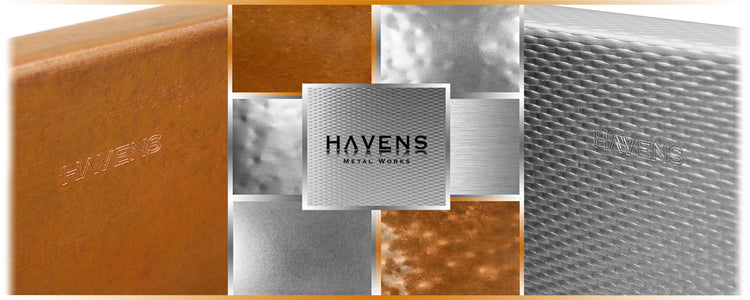The Ultimate 2021 Kitchen Sink Buying Guide: Copper and Stainless

LEARN THE BASICS OF YOUR KITCHEN'S MOST USED TOOL

The available choices one faces when searching for a kitchen sink are seemingly endless. With so many different types, styles and features - how is finding the “perfect” sink for your kitchen supposed to be easy? Well, you’ve come to the right place, it’s less complicated than it seems. Let’s begin with some of the basics and address some important details.
STYLES OF KITCHEN SINKS
Farmhouse (Apron Front) - As pictured above, the phrase “farmhouse” refers to a sink that has an exposed front panel, known as the “apron.” The alternative to this style of sink is a standard undermount with cabinetry and countertop in the front portion of the space.
Undermount - This style of sink is the most common, and installs directly beneath the counters. Typically, the sink walls are flush with the countertop cutout and the faucet(s) will be mounted through the countertop. Undermount sinks can be farmhouse or not.
Topmount - This style of sink is more common for replacing a failed or outdated sink. Also known as “drop-in” sinks, they install above the countertop with a self-rimming flange for support. This type of sink can be a farmhouse apron front or not.
Bar/Prep - A bar or prep sink is a compliment to the primary kitchen sink. This type of sink is smaller, more compact, and is efficient when preparing multiple types of foods and washing.
METAL TYPES FOR KITCHEN SINKS

Copper - A highly durable and intriguing material, copper is one of the best metals a kitchen sink can be crafted from. Copper holds antimicrobial properties, meaning bacteria and viruses will be eliminated directly on the surface. The natural “living” finish of copper develops a patina on the surface, which enriches over time and becomes increasingly more beautiful. The rich browns and deep oranges of the copper patina display unique characteristics in the kitchen, perfect for accenting other features. Easy to clean and extremely resilient, copper sinks can withstand harsh abrasives and will never rust or fade.
Stainless Steel - An excellent choice for a kitchen sink, stainless steel is the most popular metal choice among homeowners. There are many different types of stainless steel, all of which display different character and textures. High quality stainless is extremely durable, easy to clean, and has the ability to give the kitchen space a modern looking appearance.
Hammered Finish - Available on both copper and stainless steel sinks, a hammered finish adds a unique visual aspect to the metal, giving it a one of a kind characteristic. The hammering is done by striking the metal by hand with a hammer repeatedly until the pattern is developed. Hammered finishes can be done lightly, or an aggressive hammering can be applied for a more rustic, engaged appearance.
IMPORTANT SINK THINGS TO CONSIDER
Gauge/Quality of the Metal - When comparing different sinks, the gauge of the metal is one of the most important factors involved. The gauge and quality of the sink’s material will greatly impact the durability, longevity, and overall wear and tear of the sink - more so than anything else. The lower the gauge, the thicker the metal. The higher the gauge, the more prone the sink is to warping, denting, cracking, etc. Low quality sinks are usually coated with a lacquer or clear coat, because the metal will quickly deteriorate without it. After this coating wears off (which it inevitably will), the sink is easily scratched. This is common with imported sinks, and can easily turn your kitchen sink into an eye sore. If a sink is coated, the metal will contain impurities, recycled material, and other potentially harmful alloys such as arsenic.
Recycled vs. non-recycled - Perhaps one of the most important factors to consider is wether or not the sink’s is made from recycled material. The majority of sinks in the industry are made from recycled copper or stainless steel, which is why they have a limited lifespan, limited warranty, and overall dull appearance. Recycled metals originate from alloys that have been mixed with chemicals and other impurities - resulting in a product that will need to be dried, waxed, and heavily maintained. Investing in a sink that is made from a pure non-recycled material is more expensive, however replacing a failed sink (along with countertops and/or cabinetry) will be much more expensive in the long run.
Sinks with Clear Coat/Lacquer/Protectant - Sinks with a protective coating on them, known as clear coat or lacquer, are widely available in the kitchen & bath industry. The reason manufacturers do this is because they use a low quality (usually recycled) material, which in it’s raw form will not hold up against normal wear and tear. The protective coating will wear thinner with every use, inevitably resulting in an easily scratched surface which will rust and wear out when left unprotected. As a general rule of thumb, if a metal is coated - it has a short lifespan and leads to large amounts of cleaning and maintenance.
Dimensions may vary - One of the biggest concerns when purchasing a sink is the exact specifications. The tolerance of most imported sinks is typically 1/2”, which is completely unacceptable - dimensions should never vary more than 1/32".
Type of Material - For stainless steel sinks, the most common types of stainless used are type 301 and type 304. The differences between these metals are important, considering what a kitchen sink is used for. Type 304 stainless has an elevated performance, and is considered the golden standard in the food and restaurant equipment industry. Also, it is primarily used in hospital and healthcare applications. Type 301 stainless is specifically designed to be a cheaper alternative, with lower levels of chromium, nickel, and significantly more carbon content. This means type 301 will inevitably corrode faster, scratch easier, and require extreme maintenance down the road.
For copper sinks, evaluating the material is slightly different. The quality of copper is best determined based on thickness of the metal, and whether or not the material is recycled copper. Realistically, high quality copper will last for centuries. The purity rating has a dramatic impact on the life expectancy of the metal. The best quality copper sinks are made from 48 oz cold-rolled, non-recycled, 99.9% pure, 14-gauge copper. Inferior copper is potentially susceptible to tarnishing, rusting, warping, and cracking. Many importers are known to clear coat and lacquer their copper finish, as it is low grade.
THE DEFINING ELEMENTS OF A HAVENS SINK

American handcrafted - Every Havens sink is handcrafted in the USA and built to last for life. We craft exclusively from the highest quality American made metals available, primarily copper and stainless steel. Havens sinks are crafted in Orlando, FL from non-recycled alloys, with the highest purity rating available. The true foundation of Havens Metal products starts with high quality American craftsmanship.
Innovation & Experience - Since 1984, Havens has been innovating and evolving the art of custom sheet metal. In 1999, Havens introduced a revolutionary line of highly advanced ergonomic sinks to the kitchen & bath industry. Through innovative design, Havens provides homeowners an advanced kitchen sink experience while at the same time integrating a luxurious visual aspect to the kitchen space.
Rear Drain Placement - A simple, yet revolutionary improvement to the kitchen sink: the right (or left) rear drain. The solution of placing the drain in the rear corner is an ingenious addition to the Havens sinks. Imagine you are at the sink, scraping a plate off with your right hand. The plate is angled slightly downward and the water is rushing off of it into the basin of the sink - along with the food. Since the drain is placed in the right rear, the food goes straight down the drain! If the drain was in the center, you would have to chase down the food debris with your faucet or sponge. This small adjustment makes a huge difference in dishwashing. Aside from using the sink, this also allows for much more space beneath the sink, as the plumbing is on one side - rather than dead center. This is very helpful, and often allows homeowners to implement trash or storage beneath the kitchen sink. Perfect for any homeowner, the intentionally designed Havens sink can be customized with right-rear, left-rear, or centered drain placement.
The Built-In Ledge - Turn your kitchen sink into a highly advanced ergonomic workstation with the added feature of the Havens built-in ledge. This upgrade allows for a wide range of integrated sink accessories, such as a cutting board, drying rack, sponge caddy, and various mixing bowls and colanders. This is the future of kitchen sink design, transforming a simple basin into so much more - a professional culinary experience.





